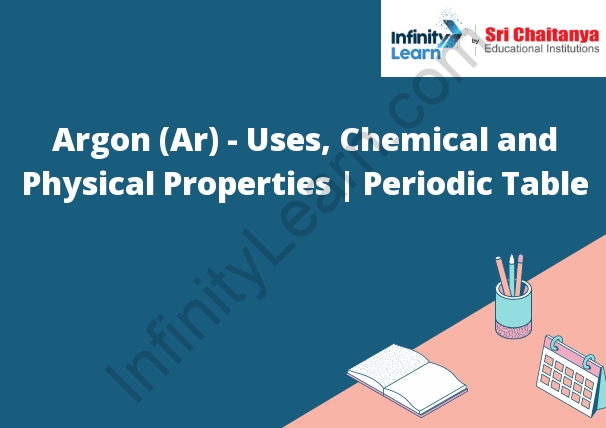Table of Contents
Chemical and Physical Properties of Argon
Argon (Ar): Argon is a colorless, odorless, and tasteless gas. It is non-toxic and non-flammable. Argon is a noble gas, meaning it is inert and does not react with other elements. Argon is the third most abundant gas in the Earth’s atmosphere, after nitrogen and oxygen. It is a poor conductor of electricity and has a low melting point. Argon is used in light bulbs, fluorescent lights, and lasers. Argon is a noble gas that is found in the Earth’s atmosphere. It is colorless, odorless, and tasteless. Argon is used in light bulbs and fluorescent lights.
Argon is a chemical element with the symbol Ar and atomic number 18. It is a colorless, odorless, and tasteless inert gas. Argon is the third most abundant gas in the Earth’s atmosphere, at 0.93% by volume. Argon is produced industrially by the fractional distillation of air.
Argon has several important chemical and physical properties. Argon is a noble gas, meaning it is not very reactive. It does not combine with other elements to form compounds. Argon is also a monatomic gas, meaning it consists of single atoms. This makes Argon very stable and unlikely to react with other substances.
Argon is a poor conductor of heat and electricity. This makes it a good gas to use in insulated containers and in electrical equipment. Argon is also a good insulator of sound. This makes it useful in windows and other sound-insulated materials.
Argon is used in a variety of applications. It is used in light bulbs and fluorescent lamps to prevent the release of ultraviolet radiation. Argon is also used in welding and cutting torches to prevent the formation of sparks. Argon is used in refrigerators and freezers to create a non-flammable atmosphere. Argon is also used in incandescent light bulbs to extend the life of the bulb.
Uses
- Argon is used in a number of applications, including lighting, welding, and filling tires. It is also used in some types of glass to make it more durable and resistant to shattering. Argon is also used in some types of insulation to help prevent heat loss. Argon has a number of unique chemical and physical properties.
- It is the only gas that is inert at room temperature, meaning that it does not react with other elements. Argon is also a poor conductor of heat and electricity, making it a good insulator.
- Argon is a noble gas which has a number of uses.
- It is used in welding and cutting torches, in fluorescent lamps and in lasers.
- It is also used in cryogenic research and in the manufacture of semiconductors. Argon is inert and does not react with other elements, so it is used as a protective gas in welding and cutting torches. It is also used to fill incandescent light bulbs and fluorescent lamps, because it does not react with the tungsten filament or the phosphor coating.
- Argon is also used in lasers to produce a high-intensity beam of light. In cryogenic research, argon is used to cool materials to very low temperatures.
- And in the manufacture of semiconductors, argon is used to purify the silicon wafers.

Periodic Table
- The periodic table is a table that arranges all of the known chemical elements in order of their atomic number. The table is also divided into groups and periods. The groups are those elements that have similar chemical properties, and the periods are the rows in the table that are divided by how many electrons are in the outermost energy level of an atom of that element.
- The periodic table was first developed in 1869 by a Russian chemist named Dmitri Mendeleev. Mendeleev arranged the elements in order of their atomic weight, and he noticed that when he did this, there were gaps in the table. He then predicted that new elements would be discovered that would fill these gaps. Sure enough, new elements were discovered and eventually added to the table.
- The periodic table is important because it helps scientists understand the chemical properties of elements. It also allows scientists to predict the properties of new elements that have not been discovered yet.




